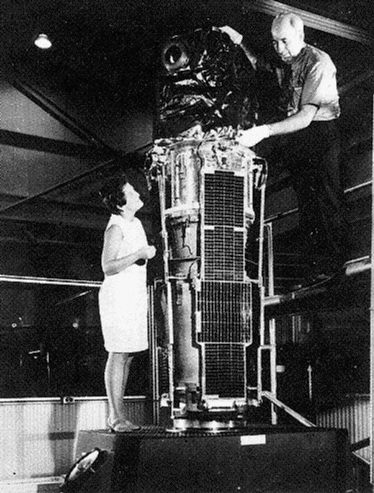Forty years ago today — December 12, 1970 — NASA launched Explorer-42, the first of a series of small observatories, from the San Marco launch platform off the coast of Kenya.

(The Uhuru satellite in pre-flight checkout, with Dr. Marjorie Townsend [who named the spacecraft] and Dr. Bruno Rossi. NASA image.)
Also called Uhuru, the spacecraft was built to scan the celestial sphere for X-ray sources. In fact, the catalog of sources developed from its data is still in use. Other spacecraft in the series were built to survey the sky in other energy regimes, e.g., in the gamma-ray and ultraviolet parts of the spectrum.
According to this page of Goddard Space Flight Center “Facts and Firsts,” Uhuru “catalogued more than 200 X-ray sources and found the first evidence for a black hole” at Cygnus X-1.
This NASA “Imagine the Universe!” page points out that Uhuru means “freedom” in Swahili, and the spacecraft was so named in honor of its Kenyan hosts. It was also launched on the seventh anniversary of Kenya’s independence.








Spam comment deleted / GWR //